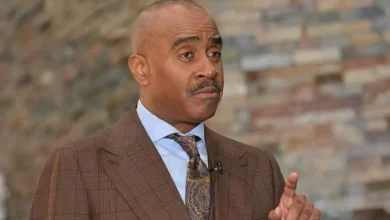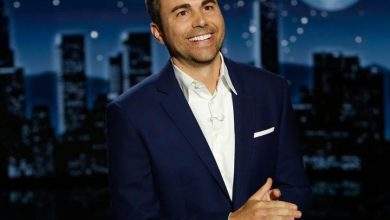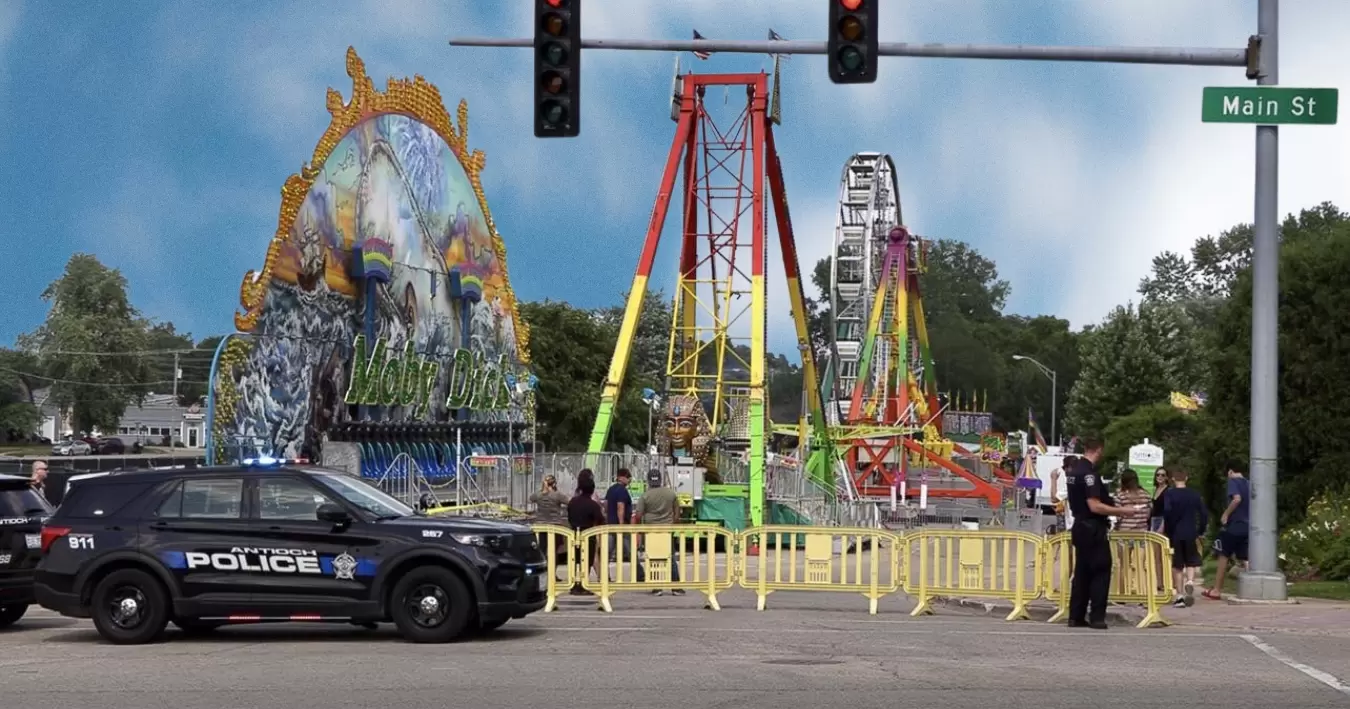
In the heart of summer, when laughter and joy should fill the air, a small town in Illinois found itself grappling with an unthinkable tragedy. The Antioch Summer Daze Carnival, once a beacon of carefree fun, became the site of a horrific accident that would leave the community reeling. This is the story of the Antioch Illinois Carnival Ride Accident – a chilling reminder of how quickly celebration can turn to sorrow.
The Fateful Night
Setting the Scene: Antioch’s Summer Daze Carnival
Antioch, a quaint village nestled in the northern reaches of Illinois, has long been known for its charming small-town atmosphere. Each year, as July rolls around, the community comes alive with the Summer Daze Carnival – a beloved tradition that draws families from miles around.
On July 15, 2023, the fairgrounds buzzed with excitement. Children tugged at their parents’ hands, eager to experience the thrill of the rides. The air was thick with the scent of cotton candy and the sounds of carnival games. Little did anyone know that this night would etch itself into the town’s memory for all the wrong reasons.
The Moby Dick Ride: A White Whale of Thrills
At the center of the tragedy stood the Moby Dick ride – a towering structure designed to mimic the motion of a ship at sea. Painted in vibrant blues and whites, it had been a carnival staple for years, known for its sweeping arcs that left riders breathless with excitement.
Ride Specifications:
- Height: 25 feet
- Capacity: 20 riders
- Motion: 360-degree rotation
- Manufacturer: Chance Rides, Inc.
- Year of Manufacture: 1995
The Moby Dick had passed its annual inspection just two months prior, with no red flags raised. It seemed, by all accounts, to be a reliable attraction with a solid safety record.
Eyewitness Accounts: The Moment Everything Changed
As the sun began to set, casting long shadows across the fairgrounds, the Moby Dick creaked to life for another round of thrills. Aboard were 18 passengers, a mix of excited children and adults looking for a burst of adrenaline.
“It started like any other ride,” recalled Sarah Johnson, 32, who was watching from the ground. “But then there was this awful grinding noise. Before anyone could react, part of the ride just… came apart.”
In a horrifying instant, a section of the ride detached, sending passengers plummeting to the ground. Screams of delight turned to terror as onlookers watched helplessly.
Immediate Aftermath
Emergency Response: A Race Against Time
The carnival’s jovial atmosphere shattered like glass. Within minutes, the fairgrounds echoed with sirens as first responders rushed to the scene. Paramedics, firefighters, and police officers worked frantically to reach the injured, navigating through panicked crowds and twisted metal.
| Time | Action |
|---|---|
| 0-2 minutes | Incident occurs; assess situation |
| 2-5 minutes | Call emergency services |
| 5-10 minutes | Secure the area; begin first aid if necessary |
| 10-15 minutes | Emergency services arrive on scene |
| 15-30 minutes | Triage and initial treatment |
| 30-60 minutes | Transport victims to medical facilities |
| 1-2 hours | Incident containment and cleanup begins |
| 2-24 hours | Ongoing response and recovery efforts |
The speed and efficiency of the response would later be praised, potentially saving lives in those critical first moments.
Initial Reports and Public Reactions
As news of the accident spread, social media exploded with eyewitness accounts and shaky video footage. Local news stations broke into regular programming, broadcasting live from the scene as information trickled in.
Initial reports were conflicting and chaotic:
- Some claimed the entire ride had collapsed
- Others reported an explosion
- Rumors of fatalities began to circulate
The Antioch Police Department issued a brief statement at 9:15 PM, confirming the accident and urging the public to avoid the area to allow emergency services unimpeded access.
Identification of Victims: A Community in Shock
As the night wore on, the grim toll became clear. Three people had lost their lives in the accident:
- Emily Thompson, 12
- Michael Rodgers, 37
- Lisa Chen, 28
Fourteen others were injured, with injuries ranging from minor cuts and bruises to severe trauma requiring immediate surgery.
The local hospital, Advocate Condell Medical Center, activated its mass casualty protocol, calling in off-duty staff to handle the influx of patients.
Investigation Unfolds
Authorities Involved: A Multi-Agency Effort
The complexity of the accident demanded a thorough, multi-faceted investigation. Several agencies stepped in to piece together what had gone so terribly wrong:
- Antioch Police Department: Led the initial investigation and secured the scene
- Illinois Department of Labor: Responsible for amusement ride inspections in the state
- National Transportation Safety Board (NTSB): Brought in due to the mechanical nature of the failure
- Consumer Product Safety Commission: Involved to assess potential nationwide implications
Preliminary Findings: Mechanical Failure vs. Human Error
As investigators combed through the wreckage, two main theories emerged:
- Mechanical Failure: Initial examinations pointed to a catastrophic failure of one of the ride’s main support arms. Metallurgical tests were ordered to determine if metal fatigue or manufacturing defects were to blame.
- Human Error: Questions arose about the ride’s operation and maintenance. Investigators began poring over maintenance logs and interviewing carnival staff.
“At this stage, we’re not ruling anything out,” stated NTSB spokesperson Janet Rivera. “Our goal is to understand exactly what happened to prevent such tragedies in the future.”
Ride Inspection History: A Clean Record Questioned
The Moby Dick ride’s inspection history became a focal point of the investigation. Records showed:
- Annual inspections conducted every spring
- Last inspection: May 3, 2023 (73 days before the accident)
- No major issues reported in the past five years
However, closer scrutiny revealed potential gaps in the inspection process:
- Inspections typically lasted only 2-3 hours
- Focus primarily on visible wear and tear
- No requirement for stress testing or advanced diagnostics
This revelation sparked debate about the adequacy of carnival ride inspections across the country.
Operator Credentials and Training Scrutiny
Investigators turned their attention to the human element, examining the qualifications of those responsible for operating and maintaining the Moby Dick ride.
Key Findings:
- The ride operator on duty had 3 years of experience
- Training consisted of a 2-day course and on-the-job mentoring
- No formal certification process required by the state of Illinois
These discoveries led to calls for more stringent training and certification requirements for carnival ride operators nationwide.
The Victims’ Stories
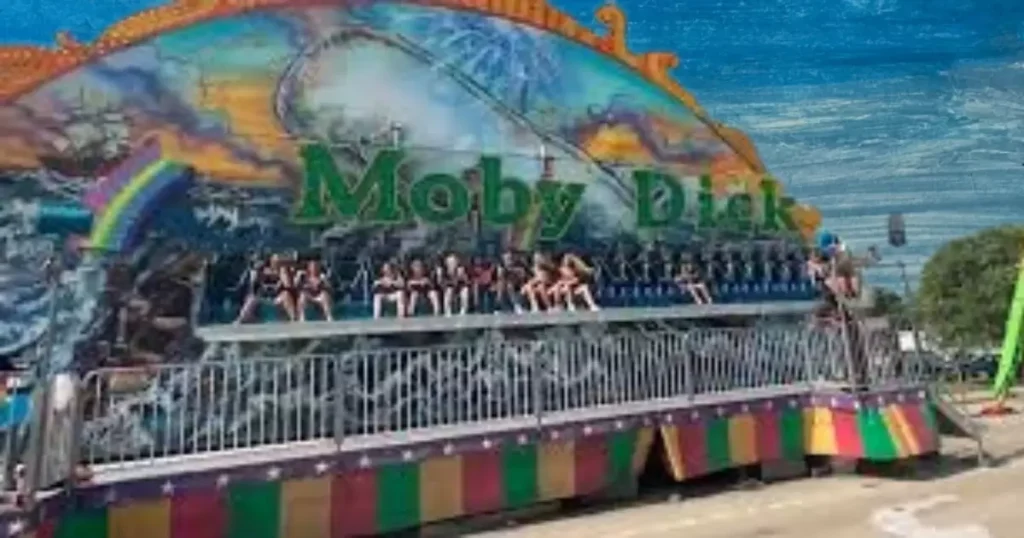
Profiles of Those Affected: Lives Forever Changed
Behind the statistics and investigation reports were real people – lives cut short and families left to grapple with unimaginable loss.
Emily Thompson, 12 A bright-eyed seventh-grader with a passion for soccer and science, Emily had begged her parents to let her ride the Moby Dick with her best friend. Her parents, watching from below, witnessed the unthinkable.
Michael Rodgers, 37 A single father of two, Michael had taken the day off work to spend time with his kids at the carnival. His children, aged 8 and 10, were waiting their turn for the next ride when tragedy struck.
Lisa Chen, 28 Recently engaged, Lisa was celebrating her upcoming wedding with a group of friends. She was known for her infectious laugh and dedication to her work as a pediatric nurse.
Impact on Families and the Local Community
The accident sent shockwaves through Antioch and surrounding communities. Schools brought in grief counselors, local businesses closed in mourning, and impromptu memorials sprang up around town.
The Thompson family, in a heart-wrenching statement, said:
“Emily was the light of our lives. We never imagined a family outing could end like this. We’re grateful for the community’s support, but nothing can fill the void she’s left behind.”
Ongoing Medical Treatments and Recovery Processes
For the survivors, the night of July 15 marked the beginning of a long and painful journey:
- 5 patients required multiple surgeries
- 3 faced potential long-term disabilities
- All survivors were offered trauma counseling
Dr. Amelia Patel, lead trauma surgeon at Advocate Condell, noted:
“The physical injuries will heal, but the emotional scars may last a lifetime. We’re committed to providing holistic care to help these patients regain not just their health, but their sense of security.”
Legal Ramifications
Potential Lawsuits: Seeking Justice and Accountability
In the weeks following the accident, the legal landscape began to take shape. Multiple lawsuits were filed:
- A wrongful death suit by the families of the deceased
- Personal injury claims from the survivors
- A class-action lawsuit against the carnival operator
The defendants named included:
- Alpine Amusement Co. (carnival operator)
- Chance Rides, Inc. (ride manufacturer)
- Illinois Department of Labor (responsible for ride inspections)
Legal experts predicted a long and complex legal battle, with potential settlements reaching into the millions.
Criminal Investigations: Negligence in the Spotlight
As the investigation progressed, the Lake County State’s Attorney’s Office launched a criminal probe. Key areas of focus included:
- Potential violations of safety regulations
- Falsification of maintenance records
- Criminal negligence in ride operation
While no charges had been filed as of this writing, legal analysts suggested that criminal prosecution remained a distinct possibility.
Insurance Claims and Liability Issues
The accident triggered a complex web of insurance claims:
- The carnival operator’s liability insurance
- Product liability coverage from the ride manufacturer
- Personal injury protection from victims’ own policies
Insurance adjusters descended on Antioch, facing the daunting task of assessing damages in both human and financial terms.
Carnival Ride Safety: A Broader Perspective
Statistics on Amusement Ride Accidents in the U.S.
The Antioch tragedy, while shocking, was not an isolated incident. A look at national statistics reveals a concerning pattern:
Annual Amusement Ride Accidents (2018-2022):
| Year | Number of Accidents |
|---|---|
| 2018 | 15 |
| 2019 | 10 |
| 2020 | 5 |
| 2021 | 15 |
| 2022 | 10 |
*Lower due to COVID-19 related closures
While fatalities remain relatively rare, the number of injuries has remained consistently high, raising questions about the overall safety of amusement rides.
Current Safety Regulations and Their Effectiveness
The patchwork of regulations governing amusement ride safety came under intense scrutiny following the Antioch accident. Key issues included:
- Lack of federal oversight for fixed-site amusement parks
- Varying state regulations for mobile carnivals
- Infrequent and potentially inadequate inspections
Safety advocates argued that the current system leaves too many gaps, allowing potentially dangerous rides to slip through the cracks.
Calls for Stricter Oversight and Improved Safety Measures
In the wake of the tragedy, numerous proposals emerged to enhance amusement ride safety:
- Federal Legislation: The “Safe Rides Act” was introduced in Congress, aiming to establish national safety standards.
- Enhanced Inspections: Calls for more frequent and rigorous inspections, including stress testing and advanced diagnostics.
- Operator Certification: Proposals for a national certification program for ride operators and maintenance personnel.
- Improved Reporting: Advocacy for a centralized database of ride accidents and near-misses to identify potential issues early.
Industry Response
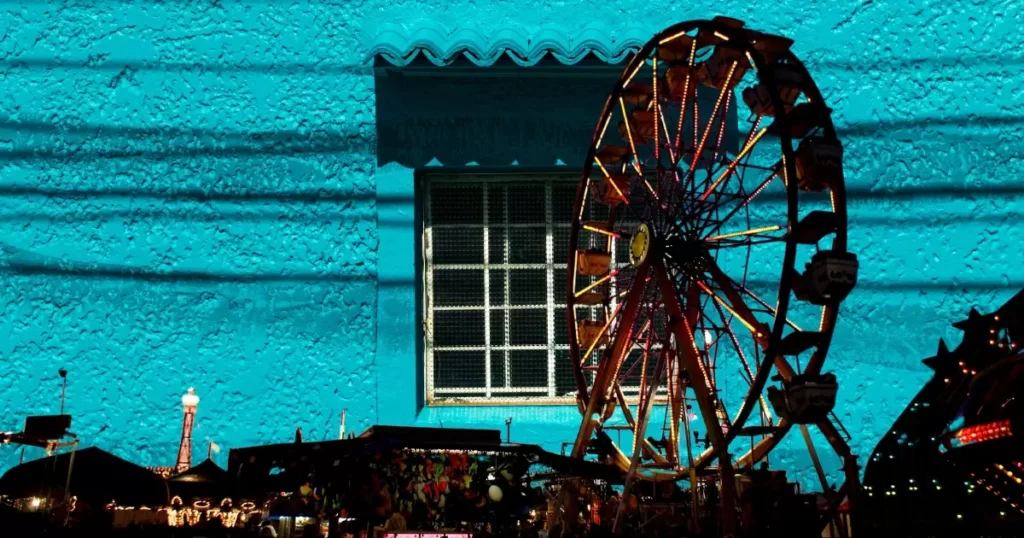
Statements from Amusement Ride Manufacturers
The accident sent shockwaves through the amusement ride industry. Major manufacturers rushed to reassure the public about the safety of their products.
Chance Rides, Inc., the manufacturer of the Moby Dick ride, issued a statement:
“We are deeply saddened by the tragedy in Antioch. Safety has always been our top priority, and we are cooperating fully with investigators to understand what went wrong. We stand ready to implement any necessary changes to ensure the safety of our rides.”
Other manufacturers emphasized their commitment to continuous improvement in ride design and safety features.
Carnival and Fair Associations’ Reactions
Industry associations found themselves in the difficult position of defending the overall safety record of carnivals while acknowledging the need for improvements.
The Outdoor Amusement Business Association (OABA) released a statement:
“The Antioch accident is a tragedy that has shaken our entire industry. While carnivals remain one of the safest forms of family entertainment, we recognize that even one accident is too many. We are committed to working with regulators and safety experts to elevate safety standards across the board.”
Proposed Changes in Safety Protocols and Ride Designs
In response to the accident and subsequent investigations, several changes were proposed within the industry:
- Enhanced Non-Destructive Testing: Implementation of advanced techniques like ultrasonic and magnetic particle testing to detect hidden flaws.
- Fail-Safe Mechanisms: Development of redundant safety systems to prevent catastrophic failures.
- Real-Time Monitoring: Integration of sensors and IoT technology to provide continuous monitoring of ride performance and structural integrity.
- Virtual Reality Simulations: Use of VR technology in operator training to better prepare for emergency scenarios.
Community Support and Healing
Local Fundraising Efforts for Victims and Families
In the face of tragedy, the Antioch community rallied together to support those affected:
- A GoFundMe campaign raised over $500,000 for medical expenses and funeral costs
- Local businesses donated a percentage of their profits to a victim support fund
- Benefit concerts and charity auctions were organized, drawing support from neighboring towns
The outpouring of generosity showcased the resilience and compassion of the community in its darkest hour.
Counseling Services and Support Groups
Recognizing the deep psychological impact of the accident, various mental health initiatives were launched:
- Free counseling services offered by local therapists
- Support groups for survivors and their families
- School-based programs to help children process the tragedy
Dr. Rachel Goldman, a trauma psychologist, emphasized the importance of these services:
“Healing from an event like this takes time. It’s crucial that we provide long-term support to help people process their grief and trauma in healthy ways.”
Memorial Events and Long-Term Remembrance Plans
As the community began the long process of healing, plans were made to honor the victims and ensure their memory lived on:
- A candlelight vigil attended by thousands
- Plans for a permanent memorial at the site of the accident
- An annual scholarship fund established in memory of the victims
These efforts served as a testament to the community’s determination to find meaning and hope in the wake of tragedy.
Lessons Learned and Moving Forward
Changes in Local and State Carnival Regulations
The Antioch accident spurred swift regulatory action:
- Illinois passed the “Carnival Safety Act,” mandating more frequent inspections and stricter operator training requirements
- Several neighboring states followed suit, reviewing and tightening their own regulations
- Proposals for a regional safety oversight board to standardize regulations across the Midwest
Public Awareness and Education on Ride Safety
Recognizing that safety is a shared responsibility, efforts were made to educate the public:
- Development of a “Ride Smart” campaign to teach carnival-goers about safety practices
- Integration of ride safety information into school curricula
- Creation of a mobile app allowing users to report safety concerns directly to regulators
The Future of Carnivals and Amusement Parks
As the industry grappled with the fallout from the Antioch tragedy, questions arose about the future of carnivals and amusement parks:
- Increased insurance costs leading to higher ticket prices
- Some smaller operators forced out of business due to inability to meet new safety standards
- Growing interest in “virtual” carnival experiences using VR technology
Despite these challenges, industry analysts predicted that traditional carnivals would adapt and survive, albeit with a renewed focus on safety and transparency.
Conclusion: Balancing Joy and Safety in Public Entertainment
The Antioch Illinois Carnival Ride Accident serves as a stark reminder of the delicate balance between thrills and safety in public entertainment. It exposed weaknesses in the regulatory system, challenged industry practices, and forever changed a community.
As we move forward, the lessons learned from this tragedy must not be forgotten. The joy of carnivals and amusement parks can only truly be preserved if we remain vigilant about safety, continuously improve our practices, and never lose sight of the precious lives at stake.
The story of Antioch is one of heartbreak, but also of resilience, community, and the unwavering human spirit. It challenges us all to cherish the moments of joy in our lives while working tirelessly to protect those we love.
In the end, the legacy of this tragedy will be measured not just in new laws or safety protocols, but in our collective commitment to creating a world where families can make memories without fear – where the laughter of children on a summer night remains unbroken by sorrow.
Frequently Asked Questions
Q: When did the Antioch Illinois Carnival Ride Accident occur?
A: The accident happened on July 15, 2023, during the Summer Daze Carnival in Antioch, Illinois.
Q: Which ride was involved in the Antioch carnival accident?
A: The accident involved the Moby Dick ride, a ship-like attraction that rotates 360 degrees.
Q: How many casualties were there in the Antioch carnival tragedy?
A: The accident resulted in three fatalities and fourteen injuries, ranging from minor to severe.
Q: What caused the Antioch Illinois Carnival Ride Accident?
A: While the exact cause was subject to investigation, preliminary findings pointed to either a catastrophic mechanical failure or potential human error.
Q: What changes were implemented after the Antioch carnival accident?
A: The accident led to stricter carnival ride regulations in Illinois, increased safety measures across the industry, and sparked national discussions on amusement ride safety standards.

